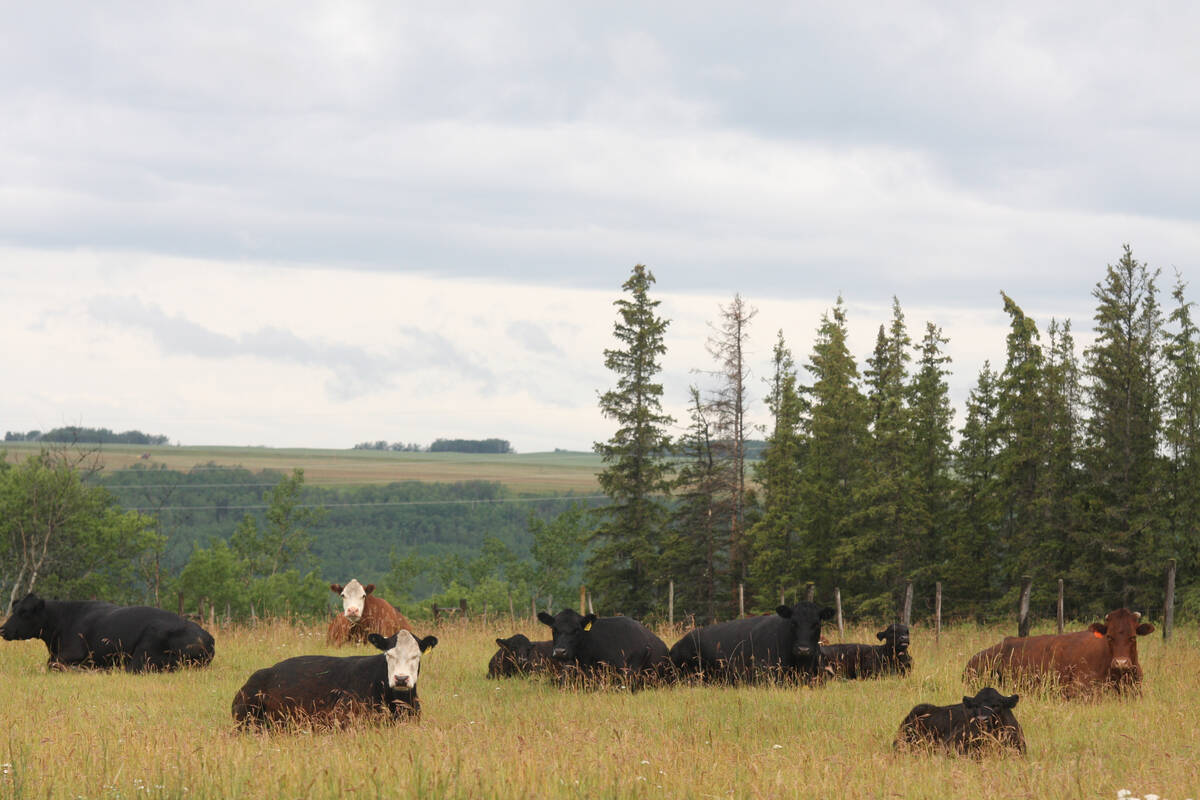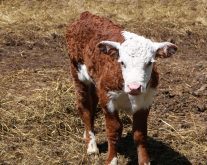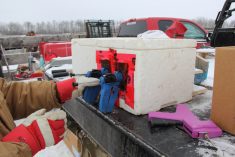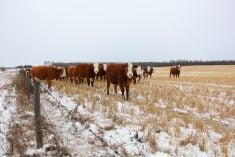Sam is an oddity and a legend at Willow Creek cow camp, Willow Creek Grazing Association, west of Nanton, Alta. He is an Appaloosa mule with a heart of gold. Anyone can ride him under saddle, from seasoned cowboys to kids learning the basics. You can rope off him and he will carry 200 pounds of salt in a pack saddle up and over mountains to faraway salt licks. Most things happen at Sam’s speed but he never fails to get you home. Everyone loves him.
I have had the pleasure of participating in bringing cattle to pasture, moving cow-calf pairs and yearlings to various pastures over 20,000 acres of grazing land, in moving groups between pastures primarily by replenishing salt licks, fixing fence and then the gather each fall. Sam has been there most seasons for 13 years and provides the opportunity to observe mule behaviour among experienced ranch horses.
As most people know, mules are a cross between a male donkey (jack) and a female horse (mare). The offspring of this mix are sterile 99 per cent of the time because chromosome numbers differ (horses have 64 chromosomes and mules 62, which prevents mules from producing fertile gametes). Though sterile, mules benefit from hybrid vigour, with the size and strength of a horse and robustness of a donkey. They live longer than horses and tend to require less food. They are extremely strong. They can pull heavy loads and carry much heavier weights than donkeys or horses of similar size. Mules are intelligent and sensitive though unpredictable.
Read Also

Alberta Beef Producers gives notice of withdrawal to Canadian Cattle Association
Outlines some of the issues Alberta Beef Producers has brought forward as reasons for a potential membership withdrawal, as well as the Canadian Cattle Association’s response
MORE Vet Case Study with Ron Clarke: Mud and ornery heifer make veterinary practice ‘fun’
The belief that mules and hinnies (offspring of a female donkey and a male horse) are stubborn is a misconception; they are clever and very trainable. Being quick to learn, they can pick up good and bad habits with equal speed. You must be clear about what you are asking of them. Training mules and hinnies requires calm, patience and understanding. They will remember negative experiences. Training mules is best left to experienced equine owners.
Mules sense danger better than horses and are more cautious, making them safer to ride across difficult terrain. Their skin and smaller hooves are extremely robust. Because of these characteristics, mules are one of the world’s most common working animals, especially under harsh conditions.
One day, my granddaughter, Mia, and I crossed an open stretch of valley with a few small springs with flowing water a few centimetres deep and 20 centimetres wide. We had already crossed Willow Creek several times, belly deep and 20 meters wide. Sam, for some unknown reason, refused to cross these small streams. Rather than struggle with him we stepped around them.
I fondly remember my experience with Sam and Wyatt, a grandson still in diapers. Wyatt came to cow camp with Judith, my wife, and Charlie, my youngest granddaughter. We didn’t see them slip around the corner of the barn. Charlie squeezed between two corral poles into a pen with two green-broke 1,100-pound (500 kg) Belgian colts, then plunked herself in a corral corner to play in the dirt. The Belgians wandered within a foot of Charlie to smell the little, curly haired blonde who quietly and innocently invaded their space.
Wyatt, on the other hand, wandered over to Sam, who was munching on a few spilled morning oats. He proceeded to tie Sam to the fence with lead ropes hanging from the barn, using Sam’s front leg, a snarl of knots and a corral pole. He nonchalantly stood underneath Sam, proud of his feat. Sam enjoyed the company. Chuck, a good friend and experienced horseman, saw the potential wreck and waved us over while using hand signals to be calm. We extracted Charlie from the corral and Wyatt from underneath Sam and the tangle of rope.
Little came from this experience other than a few heart palpitations and a deeper understanding of the innate drive to keep animals and children safe.
Stan Walchuk of Blue Creek Outfitters made the following comments on differences between horses and mules in the 2023 spring issue of the Canadian Horse Journal.
- The Kentucky Derby will never be a mule race.
- If a mule does not want a certain part of its body to be handled (for example, the feet), doesn’t want to be handled a certain way, or by a certain person, convincing it otherwise may be difficult, even impossible.
- Because of the toughness of their feet and legs, mules suffer fewer soundness problems.
- Hybrid organisms often surpass their parents when it comes to certain qualities. For example, mules are known to be more intelligent and hardier than horses; they find warm climates comfortable and can work in heat that horses would find intolerable.
- A mule working into its thirties is not uncommon.
- You need the experience of walking down the trails of the Grand Canyon to truly appreciate the incredible reliability of the mule. Surefooted mules carry riders along these splendid trails daily.
- The mule’s memory is a filing cabinet to be reopened in an instant.
“My favourite animal is the mule. He has more horse sense than a horse. He knows when to stop eating — and he knows when to stop working.” — Harry S. Truman.

















